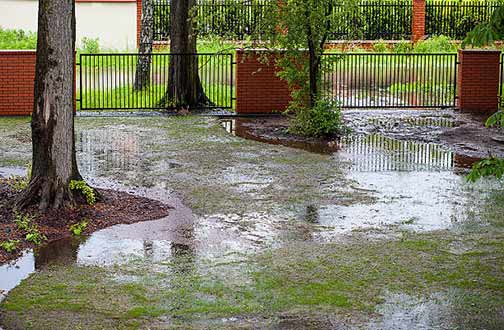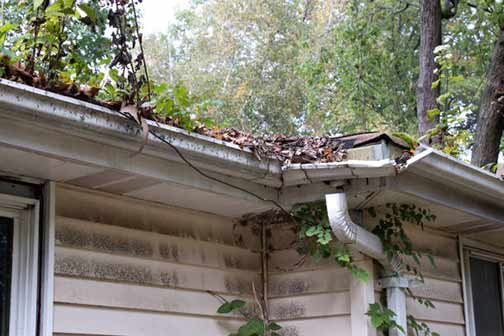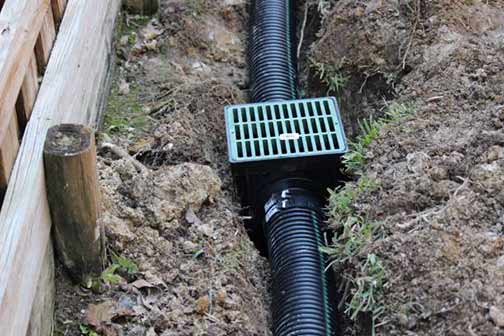
The rains are around the corner, and the existing drainage issues on your property – waterlogging, flooding, erosion, etc. – are likely to worsen, warns Dallas Management. Unless you tackle the issues now, you may expect to have the following problems in your home during the coming months:
- Water pooling on your property, resulting in unstable soil and foundation damage
- Water infiltration into the crawlspace/basement, causing water damage, wood rot, and mold
- Damage to landscaping with a significant negative impact on your home’s curb appeal
- Massive increases in the number of pests around your home
All of these put your investment at risk via downward pressures on the market value of your home. What can you do to mitigate these drainage problems? The proper steps to address your home’s drainage problems depend on the sources of those problems.

Common causes of drainage problems in homes
Improper grading
The slope of the ground determines whether runoff flows toward or away from your house. Improperly graded soil will trap water or cause flooding around your home.
Poor landscaping
Paved surfaces may prevent the free flow of water or direct water toward the house. Bare soils can also encourage erosion problems on your property.
Soil conditions
The type of soil on your property influences the rate at which water soaks into the ground. Soils with high clay content are more prone to flooding and waterlogging.
Downspout and gutter issues
Damaged, dirty, and improperly installed gutters cause water to be discharged onto the walls of your building. Your downspout may be discharging into the wrong place.
Low-lying ground
If your home is surrounded by homes that are on a higher elevation, runoff from these properties may flow into your property and flood your yard.
Water traps
These are depressions on the soil surface that tend to accumulate water. Water traps may be due to natural topography, poor grading, or landscaping issues.

Strategies for more effective drainage systems
Site assessment
The first step to addressing the drainage issues on your property is to understand the underlying cause of the problems. This assessment should be done by an expert and involves careful study of your home’s topography and soil conditions, as well as the rainfall patterns in the area.
Proper grading
This initial step ensures the effectiveness of all other measures. You want to aim for a slope of at least 1 inch per foot for the first 10 feet around the house. This step will not solve all your drainage issues, but it will protect your foundation from water infiltration.
Ensure easy access
Structures that prevent access to your property’s drainage systems should be removed or modified. These can include paved surfaces and landscaping features that impede the flow of water or features that make it hard to inspect or maintain your drainage systems.
Incorporate vegetation
Plant species that thrive in damp conditions accelerate the rate of absorption of excess water around your property. They create a more natural appearance around the home. Instead of bare patches of soil due to drainage problems, water-loving plants preserve your home’s curb appeal.
Tailored drainage solutions
The above four steps are the minimum strategies that every home with drainage problems should implement. But they are not guaranteed to solve your home’s unique drainage issues. To fully solve your drainage problems, you will need some of these tailored solutions:
French drain: Having a French drain installed on your property is an effective method for draining habitually waterlogged soil without altering the aesthetics of the existing landscape. French drains consist of a trench with perforated pipe, water-permeable fabric, gravel, and a layer of soil to disguise the drain.
Rain garden: This solution takes advantage of the natural topography of your property to solve drainage issues. It does this by creating a shallow depression with grass and flowering plants where runoff water can flow. The purpose is to hold the water until it soaks into the ground.
Swale drain: Unlike a standard drain, this drain is lined with turf grass and similar vegetation in place of ugly concrete. It channels runoff, slowing the flow of water to let more of it soak into the ground while also spreading the water over a larger area.
Trench drain: Mostly installed along driveways, these are very useful for preventing flooding on driveways. Unlike French drains, swales, and rain gardens, trench drains can be deployed in areas with lots of vehicular and foot traffic.
Basement sump pump: A sump pump is your home’s last line of defense against flooding. If the above solutions fail to keep flood water out of your basement, the sump will come to your rescue. Sumps also protect your home from flooding that originates from inside your home.
Which drainage solution is best for your home?
This question is the reason why the first step to solving your home’s drainage issues is doing a proper site assessment. Through professional evaluation of your home’s drainage problems, you will see the drainage solutions that work best for your home.

